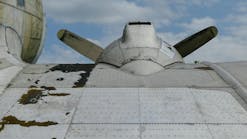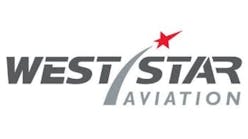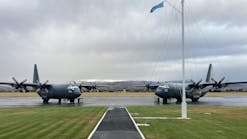Operating an Aircraft
With inoperative instruments or equipment
I'm not sure why we call it a Minimum Equipment List. The title makes me imagine a list of all the equipment that must be installed in an aircraft. A better title for what this document really is might be "permissibly inoperative instruments and equipment." For the purpose of this discussion and since the FAA won't likely change the name any time soon, we'll continue to refer to the document as a Minimum Equipment List or MEL. In this issue we'll look at the regulations that govern the operation of an aircraft with inoperative instruments and equipment and outline the makeup of a minimum equipment list.
An aircraft is a machine that is made up of several systems and system components and it is inevitable that sooner or later a component or two is going to stop working properly and need to be repaired. The question is can we continue to operate that aircraft with the component inoperative? Enter rule 14 CFR 91.213.
14 CFR Part 91.213, like so many other regulations, is disjointed and difficult to grasp with just one look. This one really takes some study to get the full picture. The answer is, yes, we can continue to operate the aircraft with inoperative instruments and/or equipment as long as it is done within the provisions outlined by 14 CFR Part 91.213.
Initially, it is important to understand that the FAA, specifically, the division of the FAA called the Aircraft Evaluation Group, develops and maintains Master Minimum Equipment Lists (MMEL). An MMEL is actually used as an MEL for Part 91 aircraft or as a guide or template by Part 135 operators in developing their own MEL for their aircraft. An MMEL is specific to an aircraft make, model, or series and is designed to cover the most common configurations of an aircraft. The familiar Air Transportation Association (ATA) numbering system is used to organize individual equipment and instrument items within an MMEL providing a consistent look-a-like order between MMEL's regardless of aircraft model. Most importantly, the MMEL is the Aircraft Evaluation Group's method of relaying to us which items of equipment are more critical than others by their inclusion or exclusion from the list contained in the MMEL.
Simplified, if you are operating a turbine-powered airplane, Part 91.213 requires that you have an MEL in your aircraft and that you comply with the restrictions within your MEL. Your MEL actually becomes a Supplemental Type Certificate (STC) for your aircraft and must be carried within the aircraft at all times. However, not all aircraft must have an MEL in order to operate with inoperative instruments or equipment. The following regulation excerpts explain (Ref 14 CFR Part 91.213 (d)):
Aircraft type or size:
14 CFR Part 91.213 (d)(1)
(d) Except for operations conducted in accordance with paragraph (a)
or (c) of this section, a person may takeoff an aircraft in operations conducted under this part with inoperative instruments and equipment without an approved Minimum Equipment List provided -
(1) The flight operation is conducted in a -
(i) Rotorcraft, nonturbine-powered airplane, glider, or lighter-than-air aircraft for which a master Minimum Equipment List has not been developed; or
(ii) Small rotorcraft, nonturbine-powered small airplane, glider, or lighter-than-air aircraft for which a Master Minimum Equipment List has been developed; and
This means that if an MMEL has been developed for a large aircraft or rotorcraft, it must be used to develop an MEL for the aircraft in order to fly with inoperative instruments or equipment. However, even if an MMEL has been developed for a small rotorcraft, small aircraft, glider, or lighter-than-air aircraft, its use is optional. Let's continue . . .
Instrument or equipment function:
14 CFR Part 91.213 (d)(2)
2) The inoperative instruments and equipment are not -
(i) Part of the VFR-day type certification instruments and equipment prescribed in the applicable airworthiness regulations under which the aircraft was type certificated;
(ii) Indicated as required on the aircraft's equipment list, or on the Kinds of Operations Equipment List for the kind of flight operation being conducted;
(iii) Required by §91.205 or any other rule of this part for the specific kind of flight operation being conducted; or
(iv) Required to be operational by an airworthiness directive; and
If your aircraft is not required to have an MEL by the preceding paragraph, the inoperative instrument or item of equipment must not be required by certification, operational, or airworthiness regulations or by the manufacturer's approved aircraft flight manual or pilots operating handbook.
Required maintenance:
14 CFR Part 91.213 (d)(3)
(3) The inoperative instruments and equipment are -
(i) Removed from the aircraft, the cockpit control placarded, and the maintenance recorded in accordance with §43.9 of this chapter; or
(ii) Deactivated and placarded "Inoperative." If deactivation of inoperative instrument or equipment involves maintenance, it must be accomplished and recorded in accordance with Part 43 of this chapter;
and
Any qualifying instrument or item of equipment that is inoperative must either be removed or disabled and the cockpit control for that item labeled as inoperative.
Operational evaluation:
14 CFR Part 91.213 (d)(4)
(4) A determination is made by a pilot, who is certificated and appropriately
rated under Part 61 of this chapter, or by a person, who is certificated and appropriately rated to perform maintenance on the aircraft, that the inoperative instrument or equipment does not constitute a hazard to the aircraft.
And lastly, for those aircraft that an MEL is not required, the pilot or a mechanic must verify that flying the aircraft with the inoperative instrument or item of equipment won't create a hazard resulting in an unsafe situation.
This leaves us then with operations conducted using an MEL for the aircraft. There are two distinct MEL types for aircraft and the difference is in the type of operation being conducted, either Part 91 or Part 135. This is where the confusion steps in. Part 91.213 provides little or no clarity of the significant difference. An outline below simplifies the differences between a Part 91 and a Part 135 MEL.
Part 91 - Ref FAA Order 8700.1, Chapter 58, Section 1,
What makes up the MEL
For an aircraft operated under Part 91 an MEL consists of the MMEL, the
preamble for Part 91 MEL's (found in the MMEL), a procedures document, and a letter of authorization from the local Flight Standards District Office (FSDO).
A written request is made to the FSDO asking for authorization to operate the aircraft in accordance with an MEL. The FSDO will take the time to meet with the operator and ensure that the operator understands the restrictions of operating with an MEL. When the FSDO is satisfied that the operator understands the limitation and can operate within the requirements of an MEL, it will issue a letter of authorization. The letter or authorization is specific to the aircraft and the operator and equates to an STC for the aircraft.
Many of the items listed on the MMEL require that certain procedures be accomplished before or during operation of the aircraft when the item is found to be inoperative indicated by (M) and (O) in the comments column. In order to fully utilize the MEL, the Part 91 operator must develop a procedures document to cover these instances referred to as (M) maintenance and (O) operational procedures. The procedures documents must also handle those items referred to in the MMEL "As required by FAR." Many of the instruments and equipment listed in the MMEL in ATA chapters 23 (Communications), 31 (Instruments), 33 (Lights), and 34 (Navigation Equipment) may be required to be operational dependent upon the type of flight to be conducted and the operational rules surrounding that flight. In those cases the MMEL refers to the item with "As required by FAR." The procedures document should also identify which items are not installed in the aircraft. Those MMEL items not installed in the aircraft need not have specific procedures written for them.
Approval process
Under Part 91 the MEL is technically not an approved document. The use of the MEL is simply "authorized" through the letter of authorization provided by the FAA. Again, since the MEL, even with just a letter of authorization, constitutes an STC to the aircraft it must be carried at all times.
Once the FAA has issued a letter of authorization the operator cannot defer maintenance on any item that requires a procedure to be performed until a procedure has been written for it. For those procedures, the Part 91 operator may refer to maintenance procedures in the aircraft maintenance manual, flight manual, and FAR's rather than rewriting them to a separate document as long as the procedure is readily available to personnel and the FAR's referred to are available to the flight crew.
How long can items be deferred?
Although the MMEL includes categories A, B, C, and D referred to as deferral period categories, the deferral period categories are not applicable to
Part 91 aircraft. Inoperative equipment and instruments must be repaired, removed, replaced, or inspected and properly deferred again at the next scheduled inspection (Ref 14 CFR Part 91.405(c)).
Part 135 - FAA Order 8400.10, Chapter 4, What makes up the MEL
An MEL created for use under Part 135 is a document created by the air carrier and approved by the FAA for that air carrier. It must be based upon MMEL but will not specifically include the actual MMEL.
The document must include at least the following elements: table of contents, log of revisions, preamble and definitions, and a control page defining the current revision status of each page contained within the MEL. In addition, the document will include the contents of the MMEL listing each installed instrument or item of equipment in the MMEL as well as the required (M) and (O) procedures called for by those items. It is not permissible under Part 135 to simply refer to maintenance manual procedures or flight manual procedures to cover the (M) and (O) procedures. Each must be addressed properly within the contents of the MEL document. The MEL must also explain in detail, as applicable, the "As required by FAR" items so that the pilot making a decision to defer the item may do so within the boundaries of the regulation.
Under Part 135, the operator must also create an MEL management program. An MEL management program defines how deferred items are tracked and subsequently repaired. The MEL management program must include the following:
- A method for tracking the date and time of deferral and repair.
- The procedures for controlling extensions to maximum repair categories.
- A plan for coordinating parts, maintenance, personnel, and aircraft at a specific time and place for repair.
- A review of items deferred due to unavailability of parts.
- The specific duties and responsibilities of the managers of the MEL management program, listed by job title.
The MEL management program may be included within the contents of the MEL as submitted or may be included within the other required manuals for the air carrier operation.
Approval process
As you might imagine, an MEL created and submitted to the FAA for use
under FAR Part 135 is scrutinized and approved by the FAA before it can be used. The document is reviewed for approval by the three principal inspectors for the air carrier, the Principal Operations Inspector (POI), the Principal Maintenance Inspector (PMI), and the Principal Avionics Inspector (PAI).
The MEL and its use are also addressed within the FAA approved operation specifications. The operation specifications will also address the ability for the operator to extend the deferral period if corrective action cannot be accomplished within the allowed deferral period. The process for deferral extension must also be addressed within the air carrier manuals as part of the MEL management program. In all cases, the extended deferral is not allowed without notifying the FAA.
How long can items be deferred?
For Part 135 MEL deferrals, the deferral categories define the term of deferral. There are four different categories; A - deferral period defined in the MEL, B - three days, C - 10 days, and D - 120 days.
In summary, in order to operate an aircraft with inoperative instruments or equipment one must comply with the requirements of 14 CFR Part 91.213. The most neglected fleet as we see it right now is the Part 91 turbine powered fleet. Very few Part 91 turbine operators currently exercise the right to utilize the MEL process and subsequently place themselves in situations where they must immediately correct discrepancies or fly illegally until they can make the repairs. It is my hope that this article will encourage more operators to take advantage of the use of an MEL to streamline their operations and ultimately reduce their costs.
Joe Hertzler is the president of AVTRAK, Inc., an Aurora, Colorado-based company. He is an A&P mechanic with Inspection Authorization and also a private pilot and can be reached at [email protected].
Additional ReSources
FAA Order 8400.10 Chapter 4
FAA Order 8700.1 Chapter 58
Advisory Circular 91-67 Minimum Equipment Requirements for General Aviation Operations under FAR Part 91
14 CFR Part 91.213





